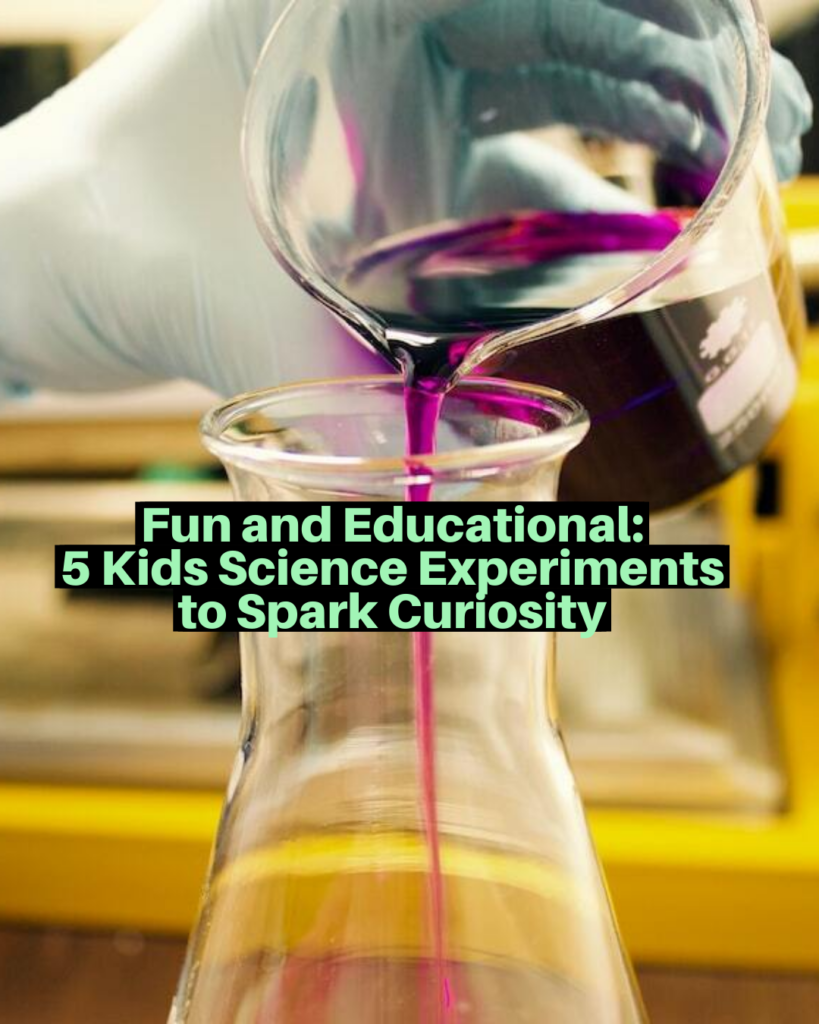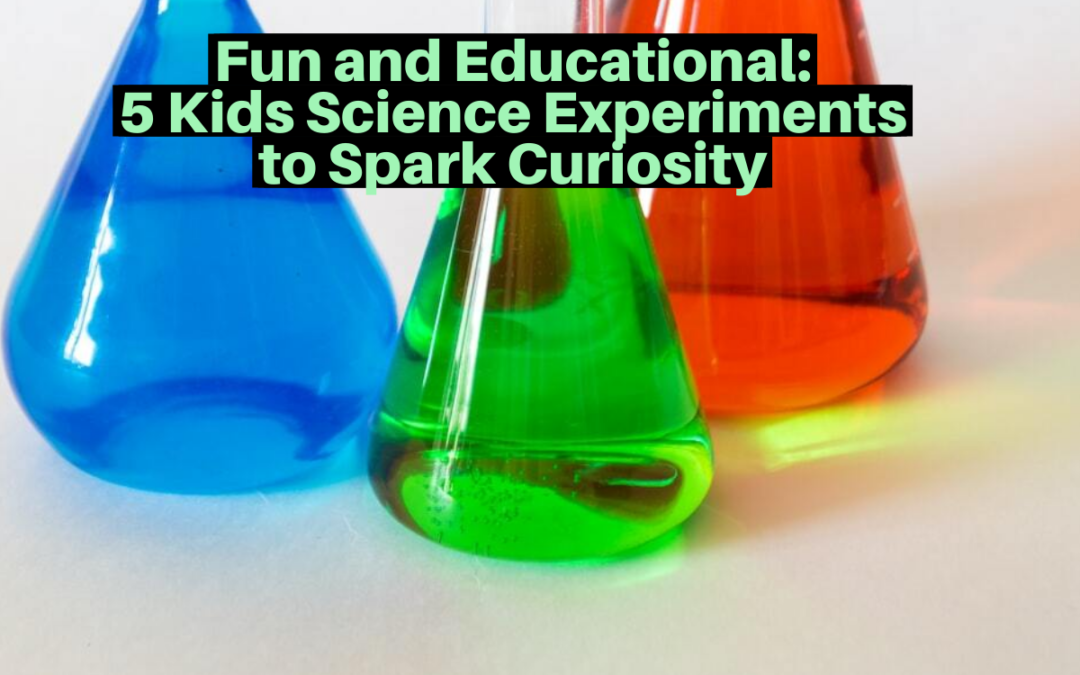This post may contain affiliate sales links.
Science is an exciting world of exploration, curiosity, and discovery, and it’s never too early to introduce kids to its wonders. Engaging children in hands-on science experiments not only stimulates their creativity but also nurtures their problem-solving skills and critical thinking. With just a few simple materials, parents and educators can create unforgettable learning experiences that leave a lasting impact. In this blog post, we’ll delve into five fun and educational science experiments that will captivate young minds and ignite their passion for science.
Colorful Volcanoes:
Who doesn’t love the explosive nature of volcanoes? This experiment will bring that excitement right into your kitchen! Gather some baking soda, vinegar, food coloring, and a small container (e.g., a plastic cup). Place the container on a tray or in a shallow bowl to contain any spills.
Guide the kids in filling the container halfway with vinegar. Next, add a few drops of food coloring to the vinegar and stir. Now, create a “volcano” by building a mound with baking soda on top of the container. Once it’s ready, stand back and watch the colorful eruption!
As the baking soda (a base) reacts with the vinegar (an acid), it produces carbon dioxide gas, causing the bubbly “lava” to overflow. Use this moment to discuss the basics of chemical reactions and the wonders of nature’s forces.
Dancing Raisins:
This experiment will have kids mesmerized by the magical dance of raisins! All you need are some raisins, clear carbonated water (e.g., club soda), and a tall glass.
Fill the glass with the carbonated water and drop a few raisins into it. Observe how the raisins initially sink to the bottom but quickly rise to the surface, then sink again. The carbon dioxide bubbles in the water attach themselves to the rough surface of the raisins, causing them to rise. As the bubbles pop at the surface, the raisins sink again. The cycle repeats, creating the captivating “dancing” effect.
Oobleck: A Non-Newtonian Fluid
Introduce kids to the fascinating world of non-Newtonian fluids with a playful batch of Oobleck. This gooey mixture acts as both a liquid and a solid, offering a memorable sensory experience.
To make Oobleck, mix one part water with two parts cornstarch in a bowl. Kids can use their hands to explore the substance’s unique properties, such as its ability to flow like a liquid when gently handled but turn solid when squeezed or hit. Encourage them to ask questions and observe how the Oobleck behaves differently from regular liquids and solids.
Rainbow in a Glass:
With just a few household ingredients, you can create a stunning rainbow in a glass, teaching kids about the density of different liquids.
Gather a tall, clear glass, honey, corn syrup, dish soap, water, vegetable oil, and food coloring in rainbow shades. Carefully pour each liquid into the glass, starting with the heaviest (honey) and ending with the lightest (water). The different densities will keep the layers separated, creating a vibrant rainbow effect. Kids will love the visual spectacle and the scientific explanation behind it.
Bending Light with Water:
Turn your little scientists into magicians by bending light with water! This experiment requires a clear glass, water, a piece of paper, and a flashlight.
Fill the glass with water and place it on a table. Lay the piece of paper flat on the table and hold the flashlight close to the paper’s edge, at an angle. Now, let the light pass through the water-filled glass and observe how the light bends as it travels through the water, creating a mesmerizing effect on the paper.
Science experiments offer the perfect blend of entertainment and education, encouraging kids to question, explore, and embrace their natural curiosity. These five hands-on activities provide an excellent starting point to introduce young minds to the wonders of the scientific world. By fostering their passion for science from an early age, we set them on a path of lifelong learning and discovery. So, grab those lab coats (or aprons), gather some materials, and let the scientific adventures begin!


